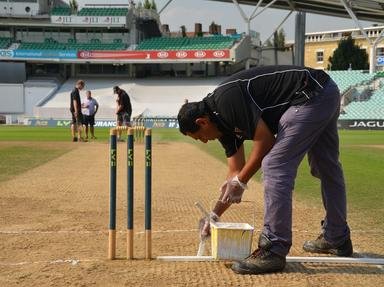Quiz Answer Key and Fun Facts
1. England announced a 17 man squad plus added another couple when two players withdrew. Australia announced a twelve man squad, and unusually, the same eleven players played all five test matches. Who was the unlucky Australian player who was 12th man for all five tests?
2. The Ashes were up for grabs, a mere three months after England won 3-0 on English soil (there were two draws). Traditionally, these series are played two years apart. Why were these two series played so close together?
3. In the first Test at the Gabba, Australia won the toss and batted. After lunch they were 5/162 and the press started to think that the previous series result (3-0 England) was going to repeat itself. What was the final result?
4. In the second test in Adelaide, Australia won the toss and batted and declared at 9/570 (Clarke 148, Haddin 118). England reached 4/114. Then one bowler took the last six wickets in one session to restrict England to 172 all out. Who was the bowler?
5. The third test was played in Perth. Australia would regain the Ashes with a win. Australia scored 395, with a reply of 251 from England. Australia followed with 6 declared for 369. How close did England get to the 505 runs required for England to win?
6. After the third test a prominent cricketer retired mid-series, which was unusual. Who was it?
7. The Boxing Day test in Melbourne produced a first for the series: England had a first innings lead of 51 runs. At lunch on Day 3, England, batting again, had an impressive 105 run lead with all second innings wickets intact. What was the final result?
8. Australia won the fifth test in Sydney by 281 runs, in three days, thanks to centuries from Smith (115 - first innings), Rogers (116 - second innings), and a match bowling stats of 8/61 from Harris. Several records were established because of this win, but which of them had been achieved for the first time?
9. Australia's top six batsmen looked fragile at times especially in the first innings of the first and third tests. Haddin, the wicketkeeper, was often left to steady the ship, batting at No. 7. Haddin scored a half-century in ALL five first innings for Australia. Did all top seven batsmen score a century in the five match series?
10. The man of the series was not a forgone conclusion. No one would have been surprised if it had gone to Brad Haddin. Which bowler won this award?
Source: Author
1nn1
This quiz was reviewed by FunTrivia editor
gtho4 before going online.
Any errors found in FunTrivia content are routinely corrected through our feedback system.
